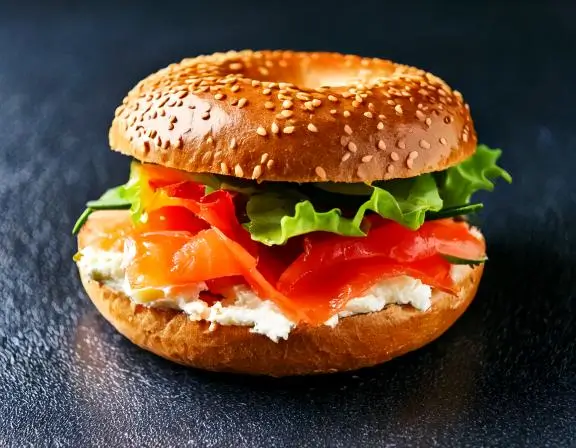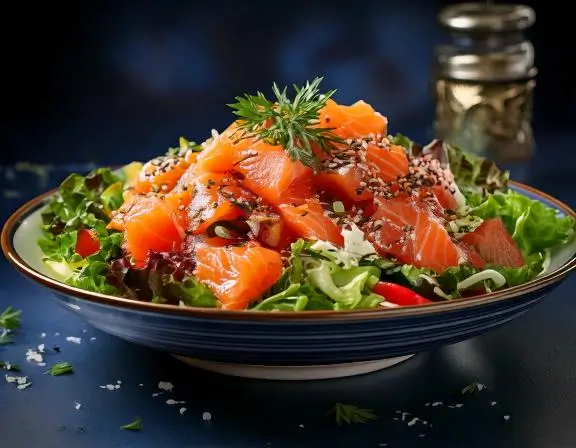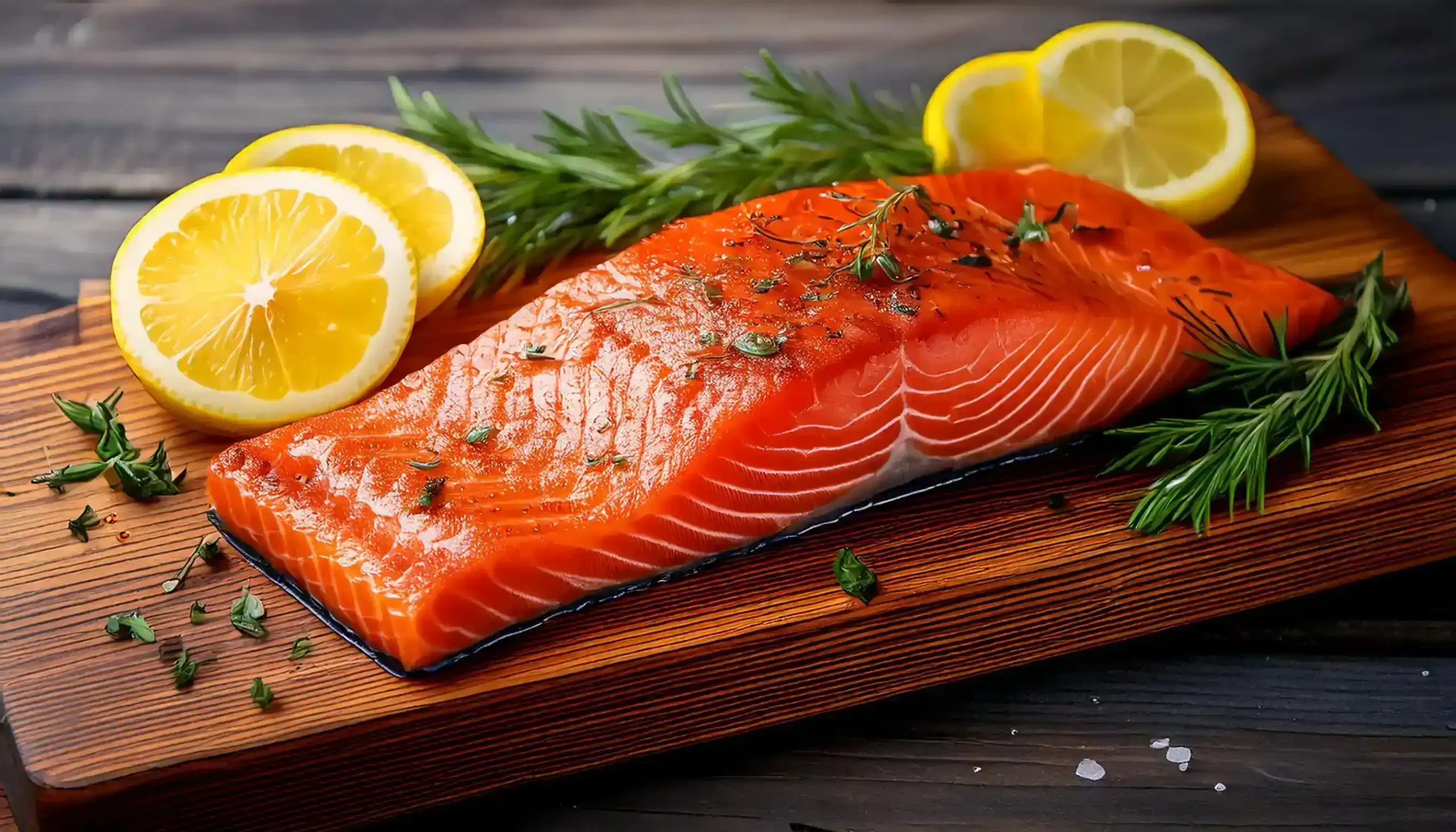When it comes to smoked salmon, the culinary world offers two delicious yet distinct varieties: cold-smoked salmon and hot-smoked salmon. While they might sound similar, these two types differ significantly in preparation, taste, texture, and even their best uses in cooking. Understanding the differences can help you choose the right option for your recipes. Let’s dive into the smoky world of salmon, comparing smoked salmon vs hot smoked salmon in detail.
Understanding Smoked Salmon
What Is Smoked Salmon?
Smoked salmon is a flavorful delicacy made by curing and smoking salmon fillets. The process involves exposing the fish to smoke from burning wood, which imparts a rich, smoky taste while preserving the fish. It’s a beloved ingredient in global cuisines, from breakfast bagels to sophisticated appetizers.
How Is Salmon Smoked?
The process of smoking salmon generally involves three main steps:
- Brining: The fish is soaked in a mixture of salt, sugar, and sometimes spices to enhance flavor and draw out moisture.
- Drying: After brining, the fillets are air-dried to form a protective layer called the pellicle.
- Smoking: The fish is exposed to wood smoke in a controlled environment, where it is either cold-smoked or hot-smoked, depending on the desired result.
Types of Smoked Salmon
Cold-Smoked Salmon: Process and Characteristics
Cold-smoked salmon is prepared by smoking the fish at a low temperature (usually between 75-85°F or 24-29°C). The process can last from 12 to 48 hours. Since the salmon is smoked at a temperature too low to cook it, it retains a silky, delicate texture with a translucent appearance.
Key Characteristics:
- Texture: Smooth, silky, and slightly firm
- Flavor: Subtle smoky taste with a mild saltiness
- Appearance: Bright orange with a glossy surface
Hot-Smoked Salmon: Process and Characteristics
Hot-smoked salmon, on the other hand, is cooked at higher temperatures (120-180°F or 49-82°C). The cooking process usually lasts for a few hours, allowing the fish to become fully cooked while absorbing a rich smoky flavor.
Key Characteristics:
- Texture: Firm, flaky, and moist
- Flavor: Stronger smoky taste with savory undertones
- Appearance: Deep orange with a slightly browned, crispy surface
Comparing Cold-Smoked and Hot-Smoked Salmon
Preparation Methods: Cold vs. Hot Smoking
The processes behind cold-smoking and hot-smoking salmon are fundamentally different. Cold-smoking keeps the fish raw while imparting a smoky flavor, thanks to temperatures below 85°F (29°C). This slow process enhances flavor without cooking the fish.
In contrast, hot-smoking involves temperatures between 120-180°F (49-82°C), effectively cooking the fish while smoking it. The result is a fully cooked product with a more robust, smokier taste.
Texture and Flavor Profiles
When it comes to texture and flavor, cold-smoked salmon is silky, smooth, and tender. Its subtle smokiness pairs well with cream cheese and bagels.
Nutritional Differences
While both types of smoked salmon are rich in omega-3 fatty acids, protein, and essential vitamins, their nutritional profiles differ slightly due to the smoking process.
| Nutritional Content (Per 100g) | Cold-Smoked Salmon | Hot-Smoked Salmon |
|---|---|---|
| Calories | 117 kcal | 161 kcal |
| Protein | 21g | 22g |
| Fat | 4g | 8g |
| Saturated Fat | 1g | 2g |
| Omega-3 Fatty Acids | 1.8g | 1.9g |
| Sodium | 670mg | 700mg |
Shelf Life and Storage Guidelines
Proper storage is crucial for maintaining the freshness of both cold-smoked and hot-smoked salmon:
- Cold-Smoked Salmon: Must be refrigerated at all times due to its raw-like texture. It has a shorter shelf life of 1-2 weeks when unopened.
- Hot-Smoked Salmon: Since it’s fully cooked, it lasts longer—up to 3 weeks when properly sealed and refrigerated. Both types can be frozen for extended storage.
Culinary Applications
Culinary Uses for Cold-Smoked Salmon
In particular, cold-smoked salmon shines in recipes where its silky texture and delicate flavor can be appreciated without the need for additional cooking:
Best Ways to Serve:
- Bagels and Cream Cheese: A classic breakfast favorite.
- Canapés and Appetizers: Topped with capers, dill, and lemon slices.
- Salads and Wraps: Thin slices add protein and depth of flavor.
- Sushi and Sashimi: Frequently used in rolls and nigiri.
Culinary Uses for Hot-Smoked Salmon
Hot-smoked salmon is more versatile because it’s already cooked, making it easy to incorporate into various recipes:
Best Ways to Serve:
- Salads: Add flakes to green salads or pasta salads for extra protein.
- Casseroles and Quiches: Its smoky flavor pairs well with creamy bases.
- Sandwiches and Wraps: Use it as a flavorful filling.
- Tacos and Rice Bowls: Add to taco shells or serve over rice with veggies.
Recipes Featuring Smoked Salmon
1. Cold-Smoked Salmon Bagel Breakfast

Ingredients:
- 2 bagels, sliced and toasted
- 200g cold-smoked salmon, thinly sliced
- 100g cream cheese
- 1 small red onion, thinly sliced
- 1 tbsp capers
- Fresh dill for garnish
- Lemon wedges for serving
Instructions:
- Toast the bagels until golden brown.
- Spread a generous layer of cream cheese on each bagel half.
- Arrange cold-smoked salmon slices on top of the cream cheese.
- Add thinly sliced red onion and capers for extra flavor.
- Garnish with fresh dill and serve with lemon wedges on the side.
2. Hot-Smoked Salmon Salad Bowl

Ingredients:
- 200g hot-smoked salmon, flaked
- 4 cups mixed greens (spinach, arugula, lettuce)
- 1 cucumber, sliced
- 1 cup cherry tomatoes, halved
- 1 small red onion, thinly sliced
- 1 avocado, sliced
- 2 tbsp olive oil
- 1 tbsp balsamic vinegar
- Salt and pepper to taste
Instructions:
- In a large bowl, combine mixed greens, cucumber, cherry tomatoes, red onion, and avocado slices.
- Flake the hot-smoked salmon over the salad.
- In a small bowl, whisk together olive oil, balsamic vinegar, salt, and pepper.
- Drizzle the dressing over the salad and toss gently.
- Serve immediately for a light and satisfying meal.
Nutritional Information (Per 100g)
| Nutrient | Cold-Smoked Salmon Bagel | Hot-Smoked Salmon Salad |
|---|---|---|
| Calories | 290 kcal | 250 kcal |
| Protein | 18g | 20g |
| Fat | 12g | 10g |
| Saturated Fat | 4g | 2g |
| Omega-3 Fatty Acids | 1.5g | 1.8g |
| Sodium | 520mg | 480mg |
Health Considerations
Health Benefits and Risks
Both cold-smoked and hot-smoked salmon offer numerous health benefits. In fact, they are excellent sources of protein, omega-3 fatty acids, vitamin D, and B vitamins. As a result, consuming them supports heart health, brain function, and muscle development.
However, there are a few health considerations:
- Cold-Smoked Salmon Risks: Due to minimal heat exposure, it carries a slight risk of Listeria contamination. It’s recommended for individuals with healthy immune systems.
- Hot-Smoked Salmon Benefits: Fully cooked during smoking, it poses less risk of foodborne illness, making it safer for pregnant women and older adults.
Safety Guidelines for Consumption
To enjoy smoked salmon safely, follow these essential tips:
- Check Expiration Dates: Always buy fresh, properly labeled products.
- Refrigerate Promptly: Store salmon in the coldest part of the refrigerator.
- Use Within Recommended Times: Consume cold-smoked salmon within 1-2 weeks and hot-smoked salmon within 3 weeks when sealed.
- Freeze for Long-Term Storage: Freeze both types to extend their shelf lives.
Purchasing and Selecting Quality Smoked Salmon
How to Choose Quality Smoked Salmon
Finding premium smoked salmon involves checking several key factors:
- Source and Origin: Look for sustainably sourced salmon from reputable fisheries.
- Appearance: Cold-smoked salmon should be vibrant and glossy, while hot-smoked salmon should have a firm, slightly browned surface.
- Texture Check: Fresh cold-smoked salmon should be soft but not slimy, while hot-smoked salmon should flake easily.
- Smell Test: A fresh, mild smoky aroma indicates good quality.
Cost Comparison and Value
Cold-smoked salmon is often pricier due to the lengthy smoking process and its delicate nature. Hot-smoked salmon tends to be more affordable, thanks to a faster smoking process and longer shelf life.
For budget-friendly options, consider buying smoked salmon in bulk or from local fish markets. Additionally, seasonal sales and online seafood suppliers may offer competitive prices.
Frequently Asked Questions (FAQs)
What is the difference between cold-smoked salmon and lox?
Though often used interchangeably, cold-smoked salmon and lox are different. Lox is cured with salt but never smoked, resulting in a rich, buttery texture. Cold-smoked salmon is both cured and smoked, giving it a smoky, delicate taste.
Can you eat cold-smoked salmon without cooking it?
Yes, cold-smoked salmon is safe to eat without cooking as long as it has been properly processed and stored. It’s commonly enjoyed in bagels, salads, and appetizers.
How long does smoked salmon last in the refrigerator?
When unopened, cold-smoked salmon lasts about 1-2 weeks in the refrigerator, while hot-smoked salmon can last up to 3 weeks. Once opened, consume both types within 3-4 days.
What are the best ways to serve smoked salmon?
Serve cold-smoked salmon with cream cheese on bagels or even in canapés for a classic appetizer. On the other hand, hot-smoked salmon works well in salads, pasta, tacos, and casseroles, making it a versatile option for heartier dishes. Both are versatile and enhance many dishes.
Does smoked salmon need to be refrigerated?
Absolutely. Refrigerate both cold-smoked and hot-smoked salmon to maintain freshness and prevent spoilage. Store them in airtight packaging until you are ready to use them.
Conclusion about Smoked Salmon vs Hot Smoked Salmon
Making the Right Choice: Cold-Smoked vs Hot-Smoked Salmon
Ultimately, choosing between cold-smoked salmon and hot-smoked salmon comes down to personal taste, culinary needs, and storage preferences. Cold-smoked salmon offers a tender, silky texture and pairs well with light dishes, while hot-smoked salmon is heartier, firmer, and perfect for cooked meals.
By understanding their unique qualities, you can enjoy the best of both worlds, creating delicious meals that satisfy any seafood lover’s palate. Whether served on a breakfast bagel or as part of a gourmet dinner, smoked salmon remains a beloved culinary treasure.

